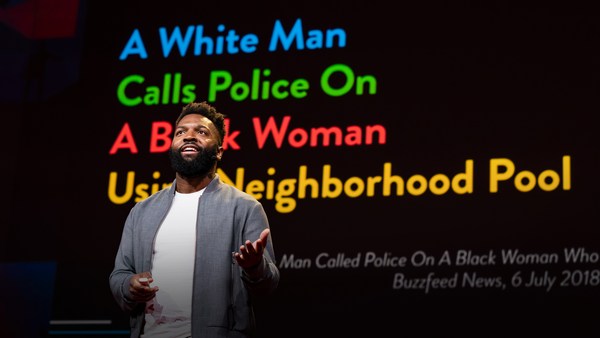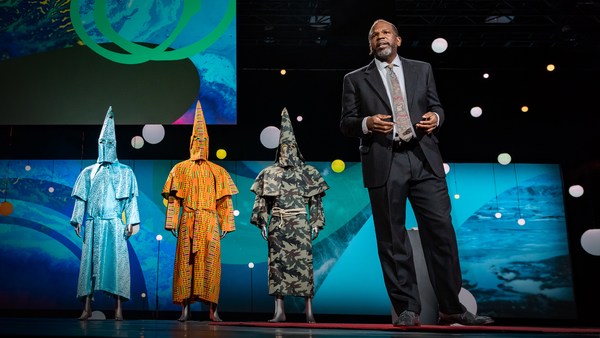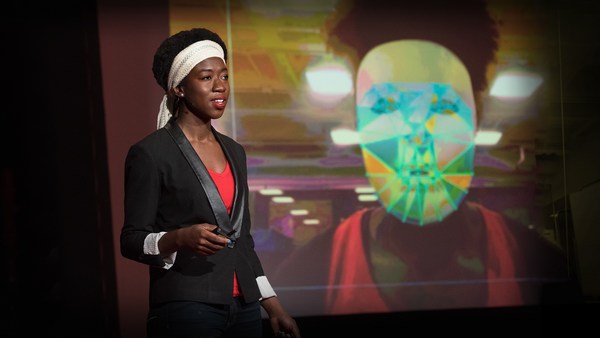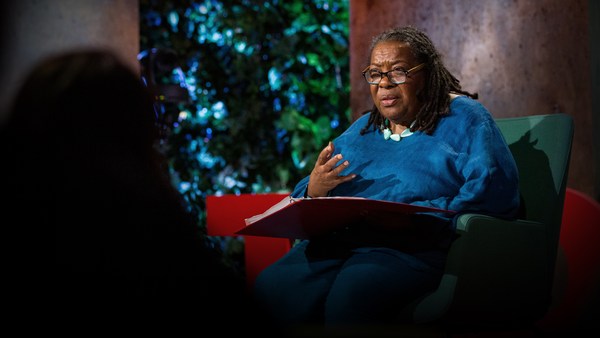My name is Glenn, I'm 25, and I don't know my real last name. It's not uncommon in America. Most black people in this country are walking around with a slave owner's last name. Black history has been systemically erased and altered for centuries.
As I give this talk, there are more than 700 Confederate monuments standing nationwide. These were erected to honor Confederate soldiers who fought to maintain slavery -- mostly in the South -- from the 1890s to the 1950s, when Jim Crow laws enforcing racial segregation were in full effect. To this day, black people are forced to confront monuments of slaveholders in our public spaces. These memorials are a physical representation of a system that is actively working to define whose lives matter and whose lives do not.
If we are going to disrupt the narrative, we have to start at the origin. Genocide, slavery and patriarchy started in the Americas with Christopher Columbus. Most people in the United States know about his voyage of 1492. Fewer people know that an estimated 250,000 indigenous Arawaks were wiped out within two years of his arrival. Even fewer people know that Columbus admitted in a letter written to Doña Juana de la Torre that "nine and 10-year-old girls were in high demand, and for girls of all ages a good price must be paid." Yet New York City's Columbus Circle has had him perched 76 feet high next to Central Park since 1892.
I started Movers and Shakers, a nonprofit, to get the statue removed. Movers and Shakers is a group of activists, artists, educators and engineers focused on using immersive technology to highlight the narratives of the oppressed. In our campaign to knock Columbus off his pedestal, we engaged in a visually provocative form of activism. We created an augmented reality installation on the true story of Christopher Columbus and used it to host teach-ins in Columbus Circle and Times Square. Many see the controversy around the statue as tension between the Italian-American community and the indigenous community. The reality is that most black people are here in this country as a result of the atrocities that were kicked off by Christopher Columbus. So we ended up holding a slave auction in Union Square to tie into the genesis of the transatlantic slave trade. I ran the New York City Marathon in chains to spread awareness to this issue. I was also arrested in Giants Stadium for hosting a slave reenactment at their football team's home opener.
We gave it everything that we had, but in the end, New York City decided to keep the statue, and New York State unanimously voted to make it a landmark. The news was devastating, but it opened up another door. We realized that with augmented reality you don't need permission from the government to put up a monument or to make a statement. You can just do it. So New York City right now currently has more than 150 statues of men and six of women and currently acknowledges slaveholders in public spaces as well. So we decided, why not just put up a bunch of AR monuments of women and people of color throughout the city?
Typically, monuments are created to commemorate the achievements of the deceased, but with augmented reality, we can reroute the rules. We started with sports. Colin Kaepernick. He was the starting quarterback of the San Francisco 49ers, and he wanted to use his platform to highlight the injustice of systemic racism. So he consulted a Green Beret on the most respectful way to do this, and he decided to take a knee during the national anthem. He lost his contract with the 49ers, he was blackballed by every NFL owner, he was criticized by millions and even the president of the United States decided to insult him. It may be decades before Colin Kaepernick is adequately respected for his courage, so our team decided to do this. Now anyone that walks by Trump Tower can see Colin Kaepernick take a knee in augmented reality, and there's nothing they can do about it.
(Laughter)
Representation matters. Serena Williams proved to the world that a black girl from Compton can dominate a sport that's traditionally played at exclusive country clubs. Let's celebrate her now.
Jackie Robinson. He broke the color barrier and empowered many black athletes to play in Major League Baseball. We're going to take this monument of him and put it in Ebbets Field so that anyone can see him swing for the fences in Ebbets Field in Brooklyn.
With augmented reality, we have the power to tell stories in public spaces that need to be told. The achievements of people like Frida Kahlo, Audre Lorde, Toussaint Louverture, Madam C.J. Walker -- this should be common knowledge. Our vision is a "Pokémon Go" for a contextualized history.
Augmented reality can also be used as a tool to support organizations that are fighting against systemic oppression. In 2019 we will release our free smartphone app with augmented reality monuments and content. You can take your smartphone and hold it over any one-dollar bill and see a scene in augmented reality that illustrates the injustice of cash bail. You can then click on the screen and be directed to the donation page of The Bail Project, a fund that raises money for people who cannot afford bail.
With augmented reality, we the people have the power to highlight the narratives of the oppressed when institutions refuse to do so. We can use this tool to highlight the systemic implications of erasing someone's history. And more concretely, we can use this technology as a way to support initiatives that are fighting against systemic racism. With AR, we have the power to reimagine a world that prioritizes justice over oppression.
Thank you.
(Applause and cheers)





